Hypnotic monstrousness
The first time I saw an artwork by Tishan Hsu (born in 1951) was in Hong Kong in 2019. I was visiting new galleries in the city and in a neighbourhood of warehouses and small factories I discovered the Empty Gallery. Upstairs, plunged into darkness, they were exhibiting works by this artist of Chinese origin who was born in Boston. What immediately struck me was the hypnotic monstrousness emanating from the artworks, which we might describe at first glance as paintings.
Human alienation

On the one hand the artist’s proposition clearly involves addressing the theme of human alienation in the face of those invasive machines we call computers. And on the other hand it seemed he had chosen to use a classical form of representation. It wasn’t about technology using technology, in other words 3D images, or whatever other innovation via paintings. In 2019 the ubiquity of artificial intelligence wasn’t yet being talked about, but Tishan had already had this premonition it seems.
At Venice Biennale
I saw other works by him at Art Basel Hong Kong, then at the Venice Biennale 2022 with Cecilia Alemani, who had selected certain recent artworks of his for the Arsenale. But above all I recently went to the Mamco in Geneva to see the retrospective of this unique artist who has invented a language of his own. Following the Secession in Vienna, this exhibition showcases the evolution of the American artist’s work. The recent artworks are the most impressive.
Resembling human flesh
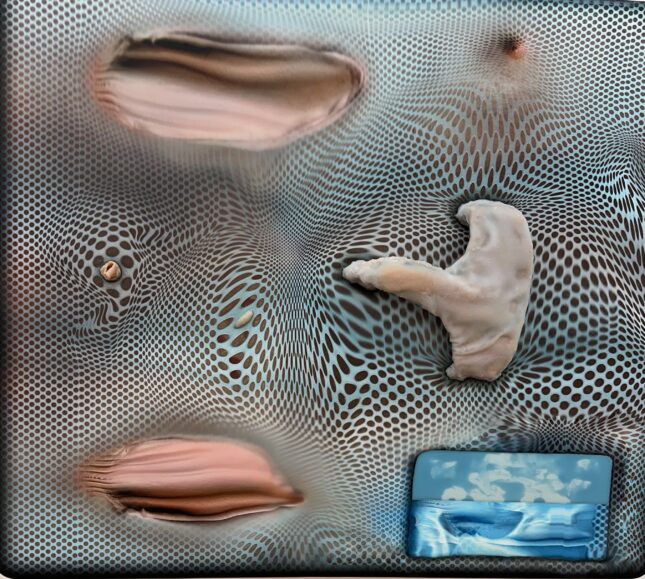
They generate a kind of alien sense that emerges in these images with pixelated surfaces. He has attached silicon reliefs to them resembling human flesh. The contrast between the universe of the machine and that of this artificial meat in 3D creates an intense emotional shock.
Paul Thek
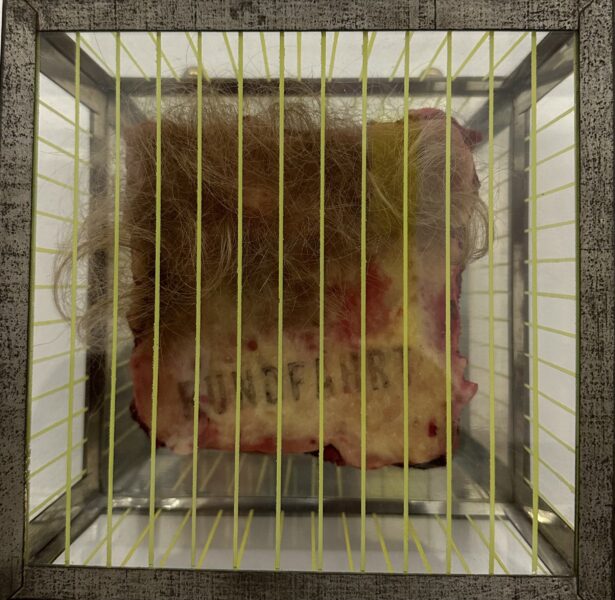
Paul Thek
It perfectly evokes the world of another American artist, Paul Thek, who during the 1960s invented his “Technological Reliquaries” which are on display on the lower floor at Mamco. The artist’s creations are also exhibited in the South of France on the Island of Porquerolles at the new exhibition at the Fondation Carmignac, The Infinite Woman, curated by Alona Pardo, until 3 November.
With the works of Tishan Hsu, it’s as though a man’s body or face are trapped behind a screen, in a hybrid of industrial design, and he’s unable to escape. We are only at the start of the nightmare.
Tishan granted me a short interview during our stay in Hong Kong in March 2024.
He is straightforward, modest and doesn’t seem entirely accustomed to his recent success. He talks about the evolution of his work, and his vision of the relationship between mankind and technology is illuminating.
Quantum leap
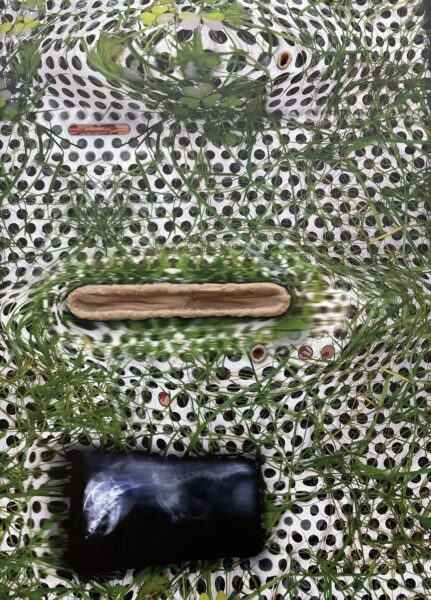
“Nowadays technology is integrated into our bodies. The machine, created by humans, is an ‘organic’ extension of the human species. It is an obsession for me because technology is undergoing unprecedented changes, a quantum leap. It is very new and very strange. And as an artist I began working on the subject in 1980. Before I was a student at MIT. I went to that university because I wanted to immerse myself in a technological environment and feel things.
The emotional dimension of technology

I didn’t know it yet, I didn’t understand what I was driving at, but today I can say it: I was looking for the emotional dimension of technology. So I started examining the impact of technology in my own life. I was very aware of my body facing this box and this screen. There was with paradoxical paradigm between the very real world and this world of illusions. Because working with the screen was an illusion. My references were for example in art history, the Renaissance, which, thanks to its use of perspective, created an illusion.
Very “old world” works

I was also seeking to create an illusion. I had to present the illusion of three dimensions. I wanted to invent a syntax. Technology has evolved and with it the means of expressing myself. Simply put, my works are very ‘old world’. They are all made by hand. I then used silkscreens and printing media. Then in 2010 I also started to include in my pieces the silicon I had discovered by accident.
The strangeness of now
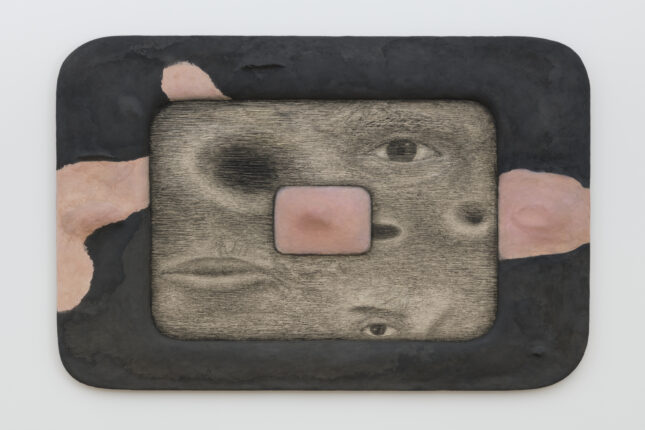
Actually I didn’t evolve within a circle of artists. I read a lot. I listen to a lot of music. People didn’t understand what I was doing because I am rigorous and conceptual but the kind of subject being addressed was in the realm of science fiction. It was very frustrating. I wasn’t trying to create a strange new world. I wasn’t interested in a fantasy world.
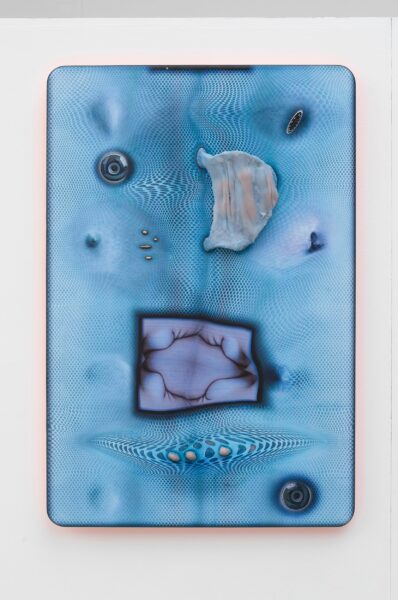
More recently my feelings have evolved concerning science fiction: I think the world is moving so fast, driven by the speed of technology, that the reality we live in has come closer to feeling like “science fiction.” What we can project into the “future” is growing ever closer to the reality we are living in, where the actual is beginning to have the strangeness of what we might have once ascribed to science fiction.
Anxiety and freedom
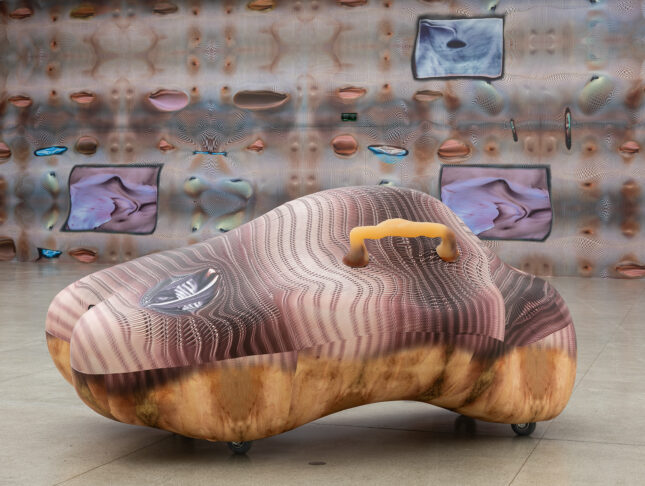
As for anxiety, you’re right, it is present in my work. You know my life is controlled by little alarms. I use the alarm on my watch that tells me what I have to do straight after. I am addicted to the news. I get email alerts. We’re all like that now. I’m aware that our lives are invaded by these technologies but they are so seductive that we are not aware of their violence. People feel anxiety but they don’t know how to free themselves from it.”
Support independent news on art.
Your contribution : Make a monthly commitment to support JB Reports or a one off contribution as and when you feel like it. Choose the option that suits you best.
Need to cancel a recurring donation? Please go here.
The donation is considered to be a subscription for a fee set by the donor and for a duration also set by the donor.




